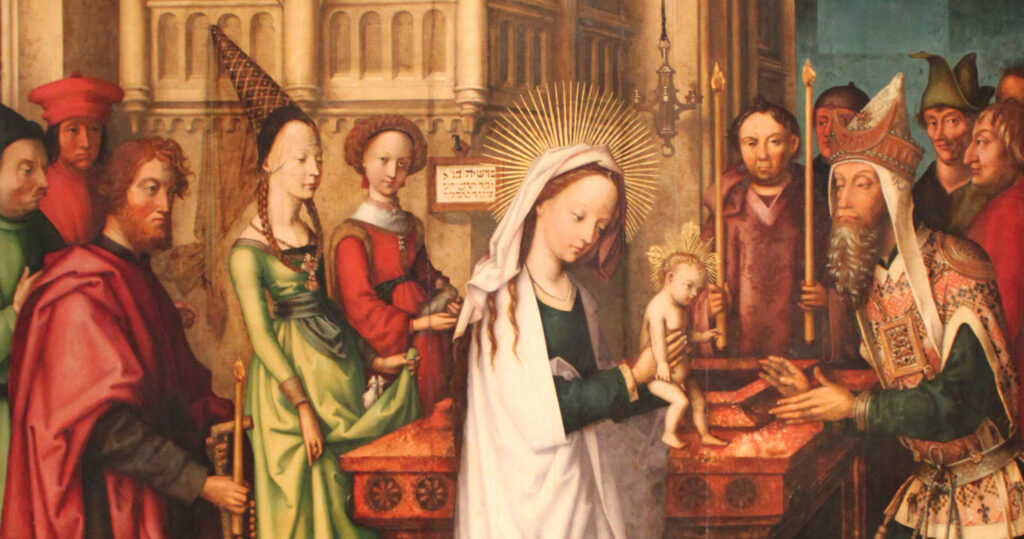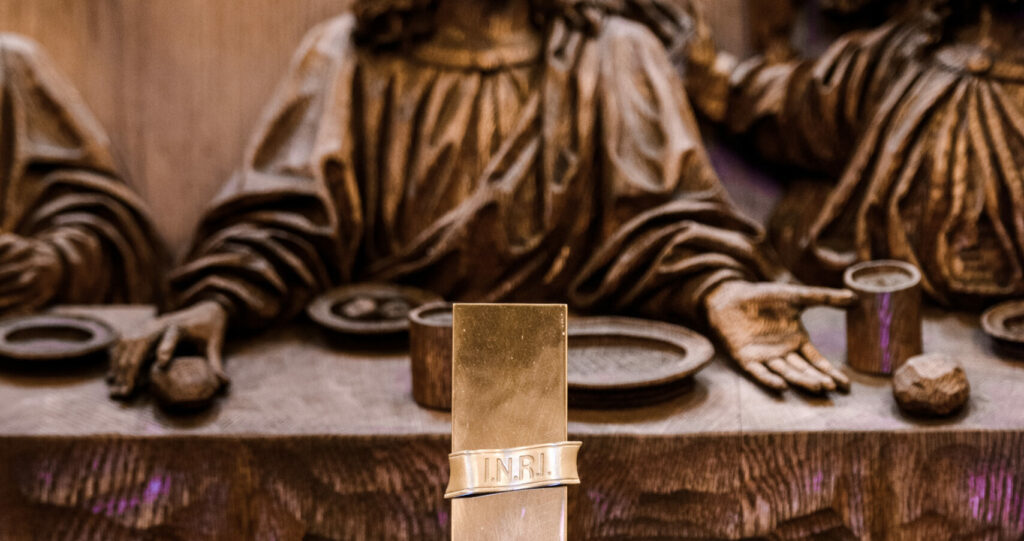By Roy S. Askins
The prophet Ezekiel saw a vision of God’s glory departing from the temple. God’s people had defiled the temple with idolatry; they had worshiped false gods in God’s house. They had turned their backs to God to worship the rising sun, thereby putting “the branch to [God’s] nose” (Ezek. 8:17); they became a stench in His nostril. They neglected His commandments, violated His rituals and, in turn, brought uncleanness into His presence. And so, the glory of God departed from the temple (Ezek. 10:1–22).
God’s glory indicates His presence for the good of His people. His glory appeared in the cloud by which He led the people of Israel out of Egypt (Ex. 16:10); from a cloud of glory, He spoke to the people of Israel and gave them the Ten Commandments (Ex. 19–20). In the tabernacle built by Moses and in the temple Solomon built, God descended in a cloud of glory to indicate His blessing and presence among His people (Ex. 40:34–38; 1 Kings 8:10–11). The departure of His glory from the temple meant that He had abandoned Israel as surely as a parent abandons a wayward child — only after years of longsuffering patience, warning and admonition.
But God did not leave Ezekiel and his hearers without hope. Ezekiel also received a vision of the glory of the Lord returning to the temple. Simeon saw the fulfillment of this vision and sang the song we now know as the Nunc Dimittis; God’s glory has returned.
Circumcision and purification
The context of Simeon’s song in Luke 2:29–32 frames the event and helps us understand what he sings about. Mary and Joseph had returned to the temple to fulfill the Old Testament ceremonial law (Luke 2:22–27). These Old Testament regulations can seem weird to us. At worst, we sneer at such requirements for purification from our modern, scientific perspective. At other times, these requirements can leave us bewildered and wondering: How can giving birth to a child make a woman unclean? How does modifying the vessel by which begetting occurs incorporate a child into the household of God?
We might also ask: Why is God so obsessed with childbirth?
God promised to Eve a seed, a descendant, who would crush the serpent’s head (Gen. 3:15). And He promised this also to the patriarchs, and thereby also to their wives, even when they found it amusing (Gen. 18:12). God is obsessed with childbirth because the begetting and birthing of children is how He would bring forth the Redeemer of the world.
The rites of purification mark the woman’s privilege of participating in the divine blessing of childbirth, of the lineage of the Savior promised to Eve and — as hindsight reveals — delivered through Mary. The rites of purification, therefore, moved the woman from her own cycles and timeline to God’s time and His order.
The consecration of firstborn sons took place for the same reason. All the firstborn children of Israelite women point to and are completed in the birth of the Child from the womb of the Virgin Mary. Whereas the former sons were tainted by the sin of their fathers, this Child was conceived by the Holy Spirit and born of a woman who had not known a man. This Child was not born with original sin.
And yet, despite His purity and perfection, He lived under the laws and requirements of those who were not pure, who were tainted by sin. As sinful men circumcised His flesh, He was preparing to set apart those who would receive Him with a circumcision not made by hands, but in the heart by the hand of God.
In short, all the rituals and rites, all the lineage from Abraham to Joseph, all the practices and worship of God that His people and priests in the Old Testament had abandoned and for which God abandoned the temple, pointed to the Child born of Mary — the infant Simeon took in his arms and for which he blessed God.
Simeon’s Song
With eyes opened by the Holy Spirit, Simeon sees the glory of God returning to the temple. The glory does not sit on a sapphire throne upon the cherubim, as Ezekiel saw (Ezek. 1:26). Instead, the glory of God rests in the tabernacle of human flesh (John 1:14), in the baby Simeon held in his arms.
The glory of God, which once abandoned the temple because of the failure of the Israelite people to follow His commands and their failure to circumcise not merely the flesh but also the heart, now returns to the temple. God Himself undergoes the law’s demands. The One who chose Israel out of all nations and gave them the mark of circumcision as the sign of His choosing now undergoes circumcision Himself. His mother who received the fulfillment of the promise made to Eve now receives purification and reincorporation into the household of God. Not, ultimately, because of the turtledoves she offers as a poor woman, but because of the Son she birthed.
This is the glory of God: the law fulfilled by His own hand. The presence of God, now no longer found in houses made by men, is found in the flesh born of the Virgin Mary and that would be crucified by hands of men. It was this glory the Holy Spirit led Simeon to see and therefore sing about in what we now know as the Nunc Dimittis:
Lord, now you are letting your servant depart in peace, according to your word; for my eyes have seen your salvation that you have prepared in the presence of all peoples, a light for revelation to the Gentiles, and for glory to your people Israel. (Luke 2:29–32)
The church’s song
The Christian church has now taken up Simeon’s song as her own, and rightly so. For, as with Simeon, we have also seen and rejoice in the salvation of our God.
The way most of us know the Nunc Dimittis is a rather recent innovation. We know this song from the Divine Service, following the distribution of the Lord’s Supper. After we have received the body and blood of Christ from the altar by the hand of His messenger, we stand in humble adoration and sing, “Lord, now lettest Thou Thy servant depart in peace” (LSB, pp. 199–200).
While there is some evidence of this use of the Nunc Dimittis in early liturgies of the church, it was not a common practice until American Lutheranism, of all things. Wilhelm Loehe, a German Lutheran who sent numerous missionaries to America and profoundly influenced American Lutheranism, included the Nunc Dimittis in an agenda he published in 1844.
Placing Simeon’s song after the distribution illuminates the glory of the gift we receive in the Lord’s Supper. As Simeon saw the fulfillment of God’s promise and the return of God’s glory to His temple, Simeon was ready to die in peace. So also, the saints who receive the body and blood of Christ have seen and received in themselves the salvation of God. As Simeon was prepared to die in peace, so is every Christian who receives this gift in faith.
For when the pastor says, “Depart in peace,” He is not saying, “Go back to your seats quietly,” which is what I, in my youth, surmised from the dour expressions of those returning from the altar. Nor is that what we mean when we sing, “Lord, now lettest Thou Thy servant depart in peace.” Rather, we are singing a joyous funeral hymn. We are saying, “I’m ready to die in peace.” From the youngest, newly confirmed child to the most aged saint at the rail, each leaves the altar ready to die in peace. They have seen and received the salvation of God, prepared in the presence and for the benefit of all people.
A song for dying
It comes as no surprise, then, that the other place the Nunc Dimittis frequently occurs in Lutheran circles is in the funeral service. The LSB Agenda encourages people to consider selecting Simeon’s song in Luke 2:25–32 as a text for the sermon. But even when it is not chosen as a primary text, the editors of the Lutheran Service Book included it as the closing Bible passage of the Funeral Service, just before the last collect and Benediction (LSB, p. 281). They also framed the passage with Jesus’ words:
“I am the resurrection and the life,” says the Lord. “He who believes in Me will live, even though he dies; and whoever lives and believes in Me will never die.” (LSB, p. 281)
How fitting it is to close one’s life with the Word from Simeon. How fitting, having witnessed and received the glory of God returned to the temple in the body of Jesus, to then depart in peace.
This article originally appeared in the December 2021 issue of The Lutheran Witness.







I do indeed love the Nunc Dimittis, remembering it well from my youth in the Lutheran Hymnal tradition. The problem I have is that I have never latched on to the Nunc Dimittis as it is found in Lutheran Worship and now LSB. They are not very melodic, my congregation struggled through it always. I have said aloud to my congregation and at District Conventions that I wish someone would write, compose, a version that is
singable. Hint, hint!
For now I will hold on to the tune I learned in my youth.
How about this version of the Nunc Dimittis:
https://www.bing.com/videos/search?q=nunc+dimittis+Alexander+Gretchaninoff&&view=detail&mid=F3971EF17B426F250271F3971EF17B426F250271&rvsmid=277B21CEF85897E1921F277B21CEF85897E1921F&FORM=VDRVRV
RE: “For when the pastor says, ‘Depart in peace,’ He is not saying….”
So strain out a gnat and swallow a camel.
If the vast majority of your audience continues to misunderstand you, perhaps you could speak more plainly? Isn’t clear communication key? To what degree must the language in a worship service be encoded in a language that only a trained cleric grasps? Are the mysteries of God so inadequate that we need to add mysteries of our own making? And “how can anyone in the position of an outsider say ‘Amen’ to your thanksgiving when he does not know what you are saying?” (1 Cor. 14:16 ESV)
Furthermore, which prayer does God hear: That which actually comes from the mind of the one praying, or that which would come from the mind of the one praying if only he had the correct and complete understanding of the words he was using?
Thank God that to convey all our feeble prayers “the Spirit himself intercedes for us with groanings too deep for words.” (Romans 8:26 ESV)
Or, we could teach people, as this article is doing, what the biblical language (of which “depart in peace” is a part) means, in the same way we teach people what hope, righteousness, and sleep is in the scriptures.
We don’t abandon the language of scripture for the sake of culture, rather, we bring culture into the language of scripture so that they, too, can join with us in the joy of those words.
The Nunc Dimittis is a beautiful part of the Divine service.
Your writing brings more clarity and understanding to it.
Enjoyed the article a great deal.
Mr. Kell,
Great to hear. I’m glad to be of service.
RSA